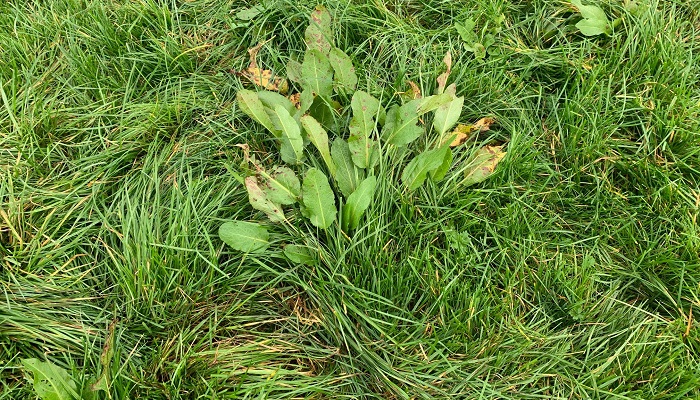18 October 2021
Management to Control Docks on your Farm

The summer of 2021 provided excellent growing conditions and weeds grew brilliantly. Fields on many farms have dock problems. Greater focus is needed to prevent dock infestation and eliminate existing docks. Austin Callaghan, Drystock Advisor, Teagasc Claremorris examines aids to dock control here
To control weeds we tend to focus on spraying or chemical control. For all weeds, and this is particularly important for docks, there are other non-chemical means of control and prevention.
What is Integrated Pest Management?
This is called “Integrated Pest Management”, the pest in this case being the dock plant. With integrated pest management we look at other means of control other than chemical control. Integrated Past management will largely focus on farmer practices.
This is a win-win situation as using various practices to prevent and control docks, the level of infestation should reduce and chemical usage will be lower, which is a benefit to the environment and also reduces costs.
For the last number of years along with your Basic Payment Scheme application you receive spray records. In these records there are a list of controls that should be used as part of the overall control of weeds. For all weeds you firstly need to understand how the plant grows and multiplies.
About the dock plant
A mature dock plant can have a root of up to 1.5 metres. A mature dock plant that is allowed to grow to seed each year can produce up to 60000 seeds. These seeds can survive in the soil for many years. These attributes allow the dock flourish and they also make control and elimination very difficult. Also the dock can vegetate in that a broken root can be the source of a number of new dock plants.
Steps to prevent the spread of Docks
Avoid Poaching: as poaching encourages the spread of weeds, and docks are no different. By poaching you are damaging the grass sward and dock seeds avail of this bare ground and germinate. Some lands appear more vulnerable to this, those heavy type soils.
Silage management. You are advised to cut your silage in late May and early June. Consideration should be given to having the silage cut before docks go to seed. When grass is closed late and / or the crop is allowed to grow for 8 – 10 weeks this can encourage dock infestation. Where the crop of grass is very heavy the grass can start to die and this combined with the presence of docks that are gone to seed provides the ideal opportunity for dock seeds to germinate. Adding slurry to these fields will encourage the dock seed to establish.
Rotate silage fields. Continuous cutting of the same silage fields causes the sward to be more open and this will encourage docks. Where possible rotate silage fields every 3 – 4 years. When taking second cuts consider not taking second cuts off the same field each year. But, in addition where lands are very prone to dock infestation consider not changing silage fields too often and spreading slurry across the entire farm.
Silage and dock seeds. When the silage grass preserves it produces acid which in most cases will kill the dock seed in the silage bale. If the grass is very well wilted, the grass will preserve at a higher pH (not as acidic) and it this situation the dock seed is more likely to survive and be returned in the dung / slurry to the field. In bales the surface of the bale may not be as acidic and seeds may also survive here.
Reseeding. Reseeding provides a good opportunity to reduce the level of dock infestation in the field. Firstly a glyphosate spray is applied to the field to kill old grasses and established docks. This spray needs to make contact with the dock leaf. In the situation where the dock leaf is diseased this may not work. Adequate time should be given for the plant to die. Do not cultivate too quickly after the application of this spray. In addition take care where the docks were sprayed earlier in the year. Some of these sprays may not have killed the plant and now there may not be leaves present to uptake the glyphosate spray. Roots may still survive and cultivation could provide opportunity for these to vegetate into a number of new docks.
Reseeding will also give opportunity for seedling docks to germinate. Remember there can be thousands of seeds in the soil. The glyphosate spray only kills the growing plant. It does not kill the seeds. In this instance it is important to spray these young seedling docks inside 6 weeks of sowing the new grass. Because of this reseeding after the 1st of August is late as very likely the weather conditions from September onwards will not be as conducive to applying this spray. Where those reseeded fields do not receive this spray to kill the young dock look at spraying the following spring. If these seedlings docks are not controlled you can end up with field containing more docks after reseeding than before.
DOCK prevention and control is not easy as evidenced by the many fields that have a major dock problem. You need a long term plan to prevent and control docks. If you require any help or advice in the area of growing grass, contact your local Teagasc Advisory Office here: Advisory Regions. Teagasc Advisors are regular contibutors of articles here on Teagasc Daily.
